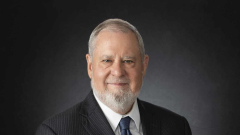Florida Gov. Ron DeSantis this month appointed six new members to the board of trustees of a public college in his state that describes itself as “a community of free thinkers, risk takers and trailblazers.”
Underlying these changes, Florida Education Commissioner Manny Diaz said, “is our hope that New College of Florida will become Florida’s classical college, more along the lines of a Hillsdale of the South.”
Board shake-ups, threats to tenure and money: How conservatives are reshaping colleges
Hillsdale College spokesperson Emily Banks Davis said that “with respect to the idea of New College becoming the ‘Hillsdale of the South,’ we are, of course, flattered by the comparison. There can only be one Hillsdale College. … But that said, we understand why Hillsdale is a sort of benchmark.
“Students are hungry for the kind of rigorous liberal arts education that the college offers.”
In response to DeSantis’ appointments, New College President Patricia Okker, who has been in her role since mid-2021, indicated she was open-minded about the new board.
“I see tremendous opportunity for New College and I believe that our new trustees will bring fresh ideas and new perspectives,” she said. “New College has a long history of embracing change, all while being true to our mission of academic excellence.”
DeSantis aims to create ‘Hillsdale of the south’: Conservative overhaul in the works for a Florida college’s board
So, what is Hillsdale College?
In many ways, Hillsdale College, in south central Michigan, and New College of Florida, on the state’s Gulf Coast in Sarasota, could not be more different.
The former is a private, Christian college founded in 1844 that prides itself on not taking public dollars or allowing students to take government aid to attend, allowing it to forgo federal rules about disclosing its student demographics and adhering to Title IX guidance on sexual discrimination.
Its founders were abolitionist Baptists, though it is officially nonsectarian, and Hillsdale says it was the first American college to ban discrimination based on race, religion, or sex. It says it was the nation’s second college to grant four-year liberal arts degrees to women. It has been called “one of the most important institutions in American conservatism” by the National Review. For conservatives, the outlet wrote in 1999, “Hillsdale is meant to be a model for how higher education should work.”
How do Hillsdale and New College of Florida compare?
New College of Florida is a public institution. Though it was established in 1960 as a private college, it joined the University of South Florida in 1975 and became independent in 2001. At a campus dedication in 1962, its website says, earth from Harvard was mixed with soil from New College “as a symbol of the shared lofty ideals of the two institutions.” Today it has about 700 students, though in recent years it has struggled to maintain enrollment, as have many other colleges and universities.
At Hillsdale, annual tuition, fees, room and board are more than $43,000 this academic year. It has about 1,515 students. New College has won praise as one of the most affordable liberal arts colleges in the nation, and it costs about half as much as Hillsdale for in-state students. Enrollment at Hillsdale has grown over the past few years.
Both colleges boast a small student-to-instructor ratio, but the structure of an undergrad’s life at each respective institution is distinct.
At New College, the “chart your own course” program is designed to develop what it calls “essential skills that all students need to succeed in work, citizenship and life.” Hillsdale’s classical liberal arts program asks all students to enroll in what it calls “a structured core of courses that takes about two years to complete. Together, they follow a journey through literature, philosophy, theology, history, the fine arts, and the natural sciences, and [students] begin to see the world as a cohesive whole.”
Hillsdale’s acceptance rate also differs sharply from New College’s. Hillsdale is more selective, admitting fewer than 50% of applicants; New College accepts about 70%. And Hillsdale students are almost an even split between men and women, while New College is about 70% female.
‘We will not go down without a fight’: Students vow amid DeSantis’ GOP takeover of Florida college
New College says 83% of grads have a job within four months of graduating, and within 10 years of leaving, they earn a median salary of more than $106,000 and about $55,000 within five years of graduation. A recent class at Hillsdale made an average of about $40,000 within six months of earning their degrees.
In addition, New College boasts of being the nation’s top public college for the proportion of students who go on to get Ph.Ds. Of a recent Hillsdale graduating class, 21 percent continued their education.
How has Hillsdale’s political influence developed?
Hillsdale’s former president George Roche, who died in 2006, “became a hero to conservatives,” according to the National Review, for standing firm on its admissions policies in spite of affirmative action. Students couldn’t even accept GI Bill benefits or Pell Grants if they wanted to attend, because this would have allowed federal oversight. One line of defense: Roche said it admitted women and Black students before the Civil War.
Hillsdale’s current President Larry Arnn, one of the architects of a ban on affirmative action in California before working at Hillsdale, has built on some of Roche’s legacy, including a massive endowment that members of Congress once fought to protect from





